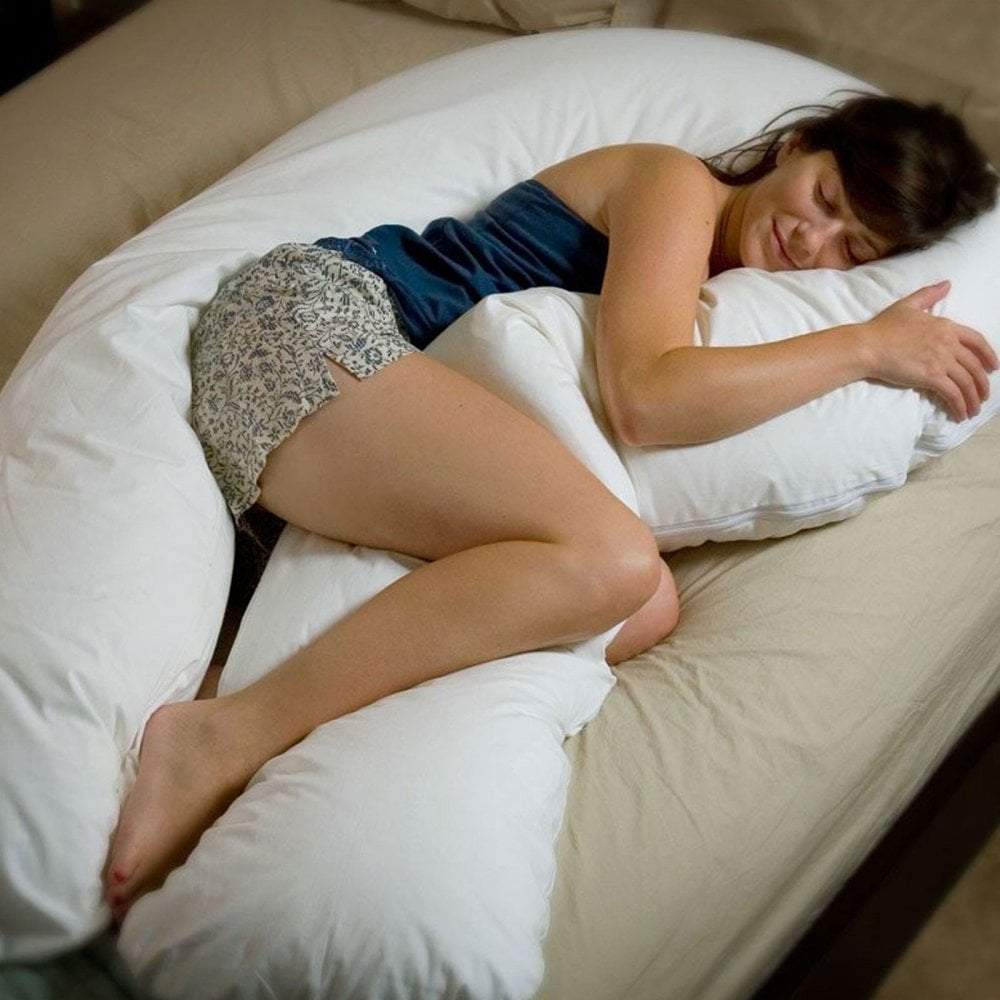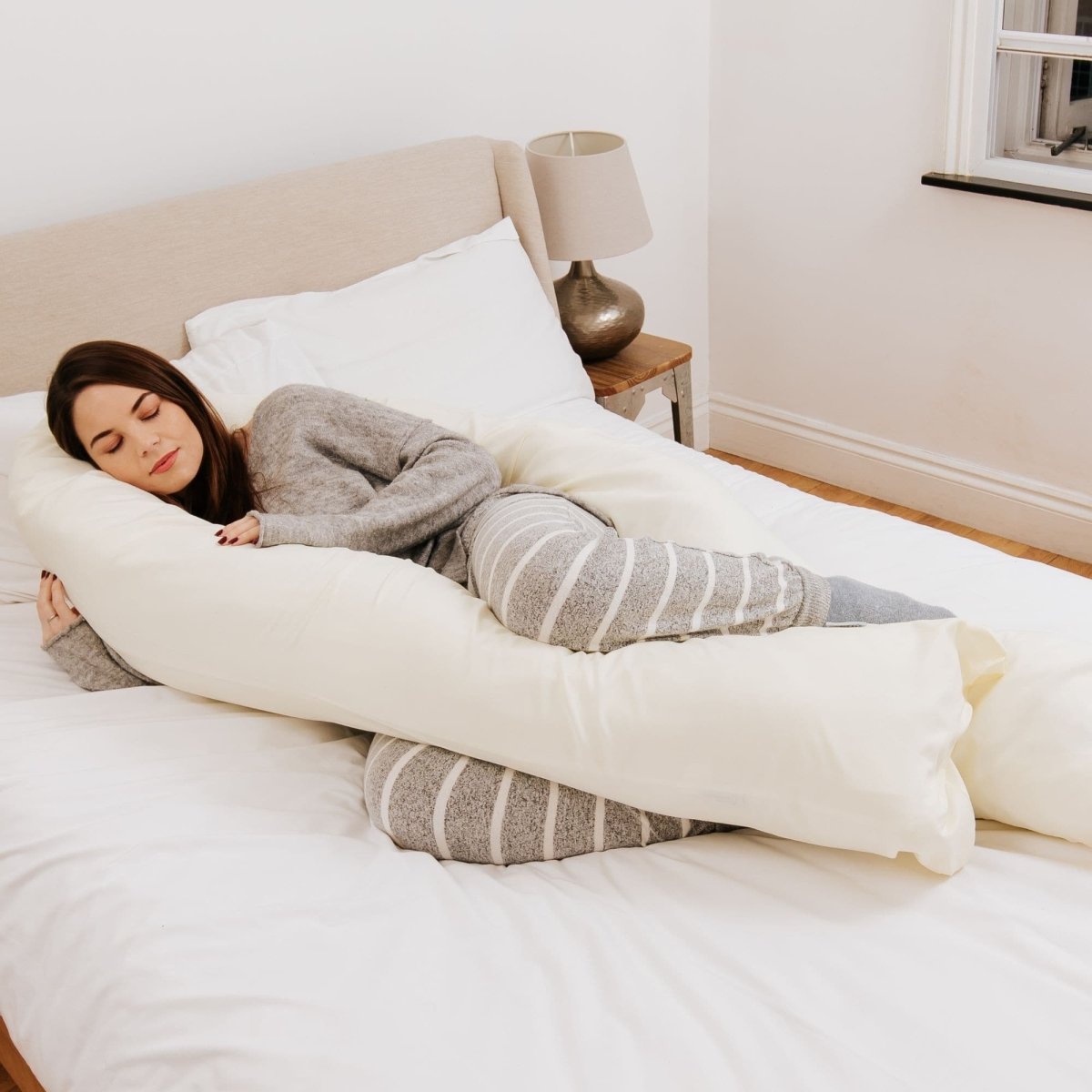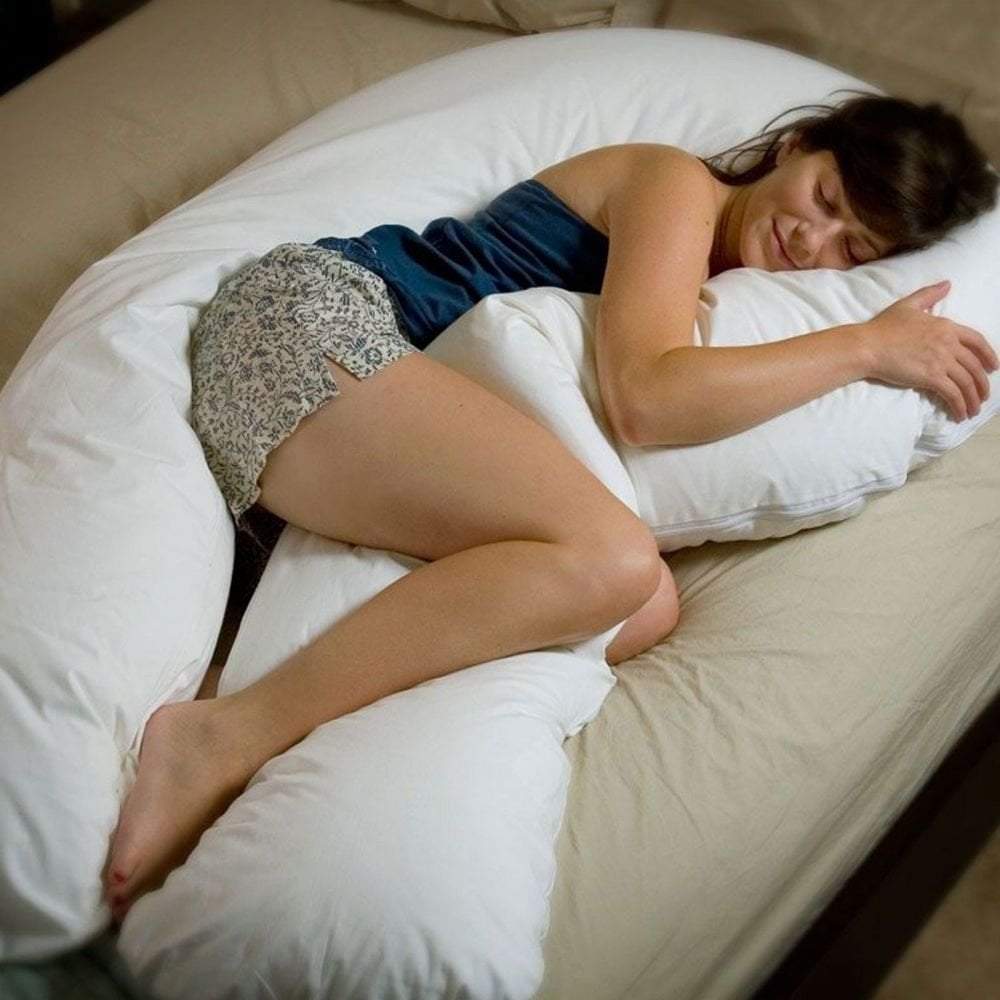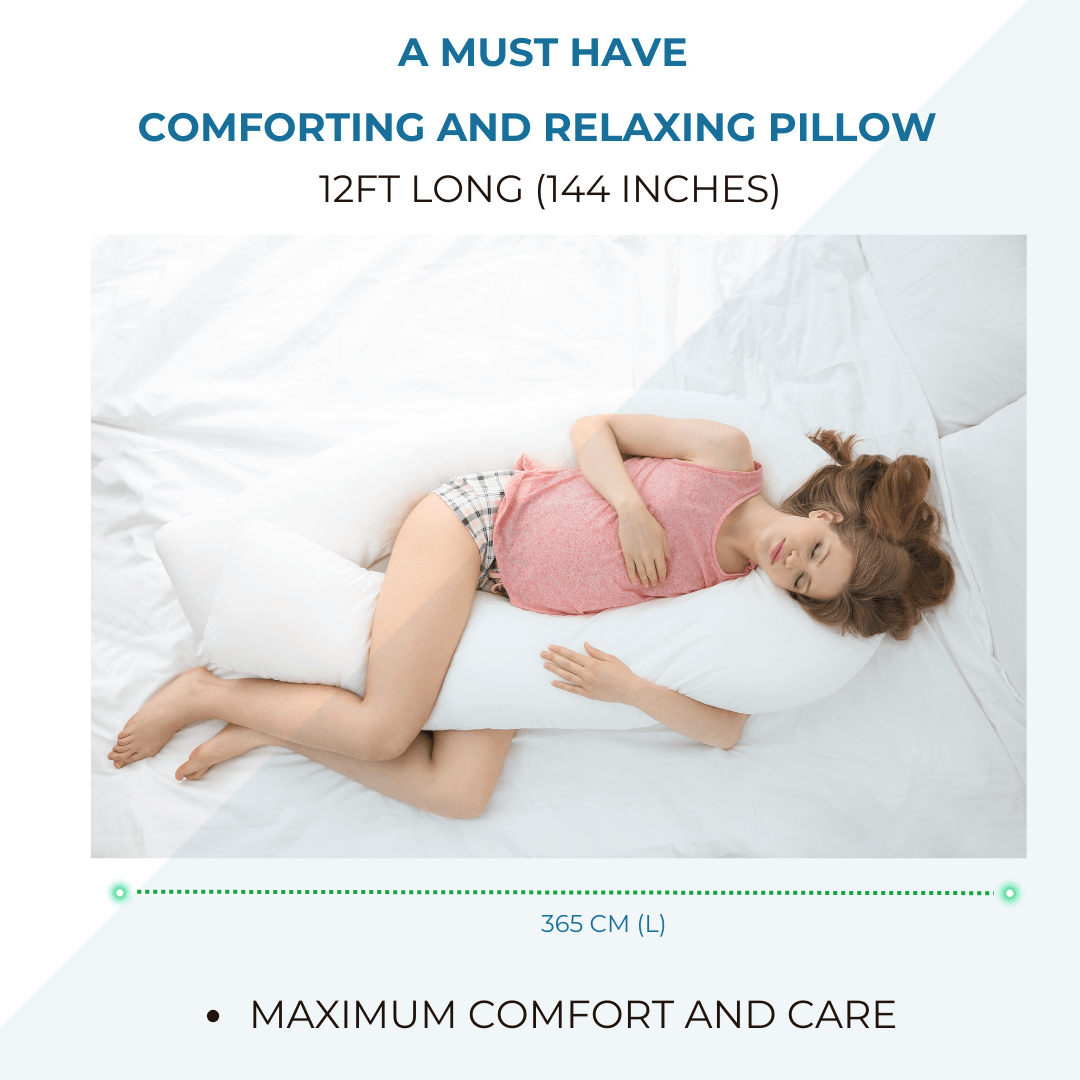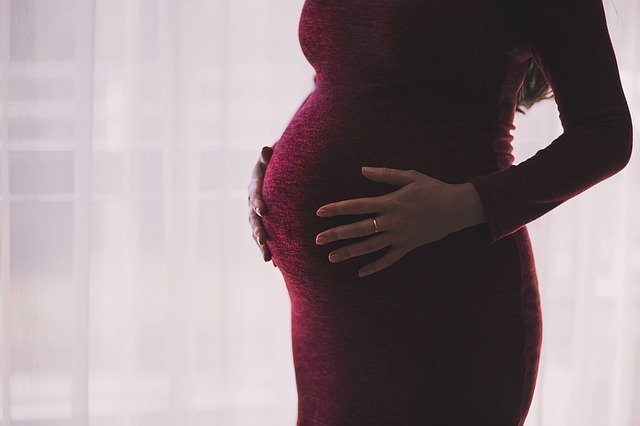Your growing baby bump during pregnancy can lead to aches, pains and stiffness in the hips and back, indigestion and heartburn, and an inability to find a comfortable sleeping position. All of this can lead to poor sleep quality, which is not ideal when you have a newborn on the way and are striving to get as much rest as possible before they arrive. Thankfully, pregnancy pillows can help you to get a more comfortable night's sleep by alleviating all those irritating aches and pains. In this blog, we'll show you how to sleep with a pregnancy pillow to alleviate pressure on your bump, hips and back.
How to sleep with a pregnancy pillow correctly
Pregnancy pillows are designed to be firm yet malleable, and their long, slim shape means you can wrap them around your body to alleviate pressure in the achy areas. There is no definitive right or wrong way to use a pregnancy pillow. It's simply a case of manipulating the pillow around your body to provide support where you need it most. However, we recommend starting with the following method and adjusting the placement of the pillow to suit your preferred sleeping position.
Fold the pillow over in the middle to create an upside-down U-shape. Your head will rest on top of the middle part of the U. Tuck your arm and knee underneath one side of the pillow, then tuck the other side of the pillow underneath your back. Your bump should be nestled into the pillow for support.
In this position you'll be sleeping somewhat on your side, with good support for both your back and hips. Plus, having the pillow tucked between your knees will help to improve blood flow to the legs and take pressure off the hips. If you tend to toss and turn in the night this shouldn't be a problem; simply roll over and tuck your opposite arm and leg underneath that side of the pillow.
It can feel strange when you first begin using a pregnancy pillow because you're simply not used to sleeping with something wrapped around you. However, after a few nights' practice and some trial and error you're sure to figure out how to sleep with a pregnancy pillow in a way that feels most comfortable for you.
Choosing the right pregnancy pillow
Our pregnancy pillows come in two lengths - 9ft and 12ft. The 12ft variety gives you a little more versatility when it comes to wrapping the pillow around you, but if you're short you might simply find it's too long and bulky. The 9ft pillow might be particularly useful for side sleepers who feel that they don't need lots of support for their lower back.
Many women find pregnancy pillows helpful not just for sleeping but for finding a comfortable position when lounging on the sofa too. In these cases, a 9ft pillow might be easier to work with so that you can focus the support on your lower back.
We recommend using a pregnancy pillow with a removable, washable cover to help you keep it clean. Our pregnancy pillows are all provided with covers, and we have lots of colours and designs available to help you match it with the rest of your bedding.
The right time to buy a pregnancy pillow
Many of us fall into the trap of not investing in a pregnancy pillow until our bump grows so big that the aches and pains start to kick in. It can be helpful to plan and get a pregnancy pillow early so that you can start using it as soon as you notice your sleep is impacted by your growing bump. The sooner you begin using the pillow the less likely you will be to notice any aches and pains during the night.
If it's only towards the late stages of pregnancy that you feel you need a pregnancy pillow and are wondering if it's worth it for such a short period, we can assure you it is! Getting good quality sleep is so important for maintaining energy and staying healthy and happy in those uncomfortable last weeks of pregnancy. Plus, you'll almost certainly find uses for the pregnancy pillow after your baby has arrived. You might find your back and hips still need some support as your body adjusts after pregnancy and labour. You could wrap the pillow around you when breastfeeding instead of using nursing pillows. You might also find it helpful for improving posture whenever you sit down for cuddles with your little one.
Additional tips for comfortable sleep during pregnancy
It's common to feel much warmer than normal during pregnancy which can lead to hot, sweaty and uncomfortable nights. Wear loose pyjamas made from natural materials like cotton, which tend to be more breathable and capable of wicking away moisture. It can also be helpful to have a cool shower before bed.
Indigestion and heartburn are common during pregnancy and this tends to get worse when laying down at night. Avoid eating large meals before bed and try to cut down on spicy foods and fizzy drinks. Eating little and often, particularly in the late stages of pregnancy, tends to be better than eating fewer large meals.
It's really common to experience a more frequent urge to urinate when pregnant. This is because the baby pushes down on the bladder and creates pressure. Try not to drink too much fluid in the last couple of hours before you go to bed to reduce the risk of waking in the night to use the loo. However, it's important to sip on plenty of water throughout the day so that you stay hydrated because dehydration can increase the risk of leg cramps at night.
Approve and download Request rewrite

